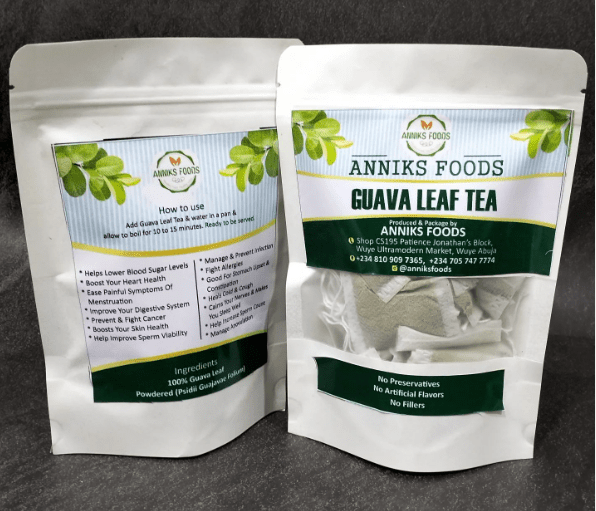Burning body fat is crucial for maintaining a healthy weight and overall well-being.
Excess body fat is not only linked to physical appearance but also to a wide range of health problems, including cardiovascular diseases, diabetes, and certain types of cancer.
By shedding excess body fat, individuals can reduce their risk of developing these chronic conditions and improve their overall quality of life.
Benefits of walking for weight loss
Among various exercises and physical activities, walking stands out as one of the most effective and accessible methods for weight loss. Walking is a natural, low-impact activity that can be incorporated into daily routines, making it suitable for people of all ages and fitness levels. Its numerous benefits include increased calorie expenditure, improved cardiovascular health, and enhanced fat burning capabilities.
Additionally, walking is a sustainable and enjoyable exercise option that can be easily maintained in the long term, leading to consistent weight loss and overall fitness. In this article, we will explore why walking is considered the best way to burn body fat and achieve weight loss goals effectively.

Understanding Body Fat
Body fat refers to the adipose tissue found throughout the body, which serves as a storage form of energy. It is composed of fat cells called adipocytes that store triglycerides, the main type of fat molecule.
Body fat plays essential roles in insulation, cushioning organs, and hormone regulation. However, excessive accumulation of body fat can lead to health problems and obesity.
Types of body fat (subcutaneous vs. visceral)
There are two primary types of body fat: subcutaneous fat and visceral fat. Subcutaneous fat is located just beneath the skin and is the fat that can be pinched and felt.

Visceral fat, on the other hand, is located deep within the abdominal cavity, surrounding vital organs such as the liver, pancreas, and intestines.
Health risks associated with excess body fat
Excess body fat, especially visceral fat, poses significant health risks. It is associated with various chronic conditions, including:
Cardiovascular diseases: Excessive body fat increases the risk of developing heart disease, high blood pressure, and stroke. Visceral fat, in particular, releases fatty acids into the bloodstream, which can lead to inflammation, insulin resistance, and dyslipidemia.
Type 2 diabetes: Excess body fat, especially around the abdomen, is strongly linked to insulin resistance and the development of type 2 diabetes. Visceral fat releases inflammatory substances that interfere with insulin signalling and disrupt glucose metabolism.
Certain cancers: Obesity is a risk factor for several types of cancer, including breast, colorectal, pancreatic, and kidney cancer. The mechanisms behind this link are still being studied, but it is believed that the excess production of hormones and inflammatory substances by fat cells plays a role.
12 Must-Have Exercises In Your Training Program
Metabolic syndrome: Excessive body fat is a key component of metabolic syndrome, a cluster of conditions that include high blood pressure, elevated blood sugar levels, abnormal cholesterol levels, and increased waist circumference. Metabolic syndrome significantly raises the risk of heart disease, stroke, and diabetes.
Understanding the different types of body fat and the associated health risks underscores the importance of burning excess body fat through effective strategies like walking for weight loss and overall health improvement.
How the Body Burns Fat

Overview of the fat-burning process
The process of burning fat, known as lipolysis, involves the breakdown of triglycerides stored in fat cells to release fatty acids and glycerol into the bloodstream. These fatty acids are then utilized by the body as a source of energy. The fat-burning process is regulated by various hormones, enzymes, and metabolic pathways.
Role of metabolism in fat burning
Metabolism refers to the chemical processes that occur within the body to maintain life and energy production. It plays a vital role in fat burning. Two key components of metabolism involved in fat burning are:
- Basal metabolic rate (BMR): BMR represents the number of calories burned at rest to maintain basic bodily functions such as breathing, circulating blood, and cell production. Higher BMR means more calories burned, including calories derived from fat stores.
- Energy expenditure during physical activity: Engaging in physical activity, such as walking, increases energy expenditure, contributing to fat burning. Physical activity stimulates the metabolic rate and enhances the body’s ability to utilize stored fat as an energy source.
Factors affecting fat burning
Several factors can influence the body’s ability to burn fat effectively:
- Intensity and duration of exercise: Higher-intensity exercises, such as running or high-intensity interval training (HIIT), can lead to a more significant immediate calorie burn. However, low-to-moderate-intensity exercises, like walking, can be sustained for longer durations, resulting in a greater overall fat burn.
- Muscle mass: Muscles are metabolically active tissues that burn more calories at rest compared to fat tissue. Increasing muscle mass through resistance training can boost the body’s overall fat-burning capacity.
- Hormonal balance: Hormones, such as insulin, cortisol, and growth hormone, play a role in regulating fat metabolism. Hormonal imbalances, such as insulin resistance or high cortisol levels, can hinder fat burning.
- Nutrition: The type and amount of food consumed influence fat burning. A balanced diet that includes an appropriate mix of macronutrients (carbohydrates, proteins, and fats) provides the necessary energy for optimal fat metabolism.
- Sleep and stress: Sufficient sleep and stress management are essential for maintaining hormonal balance and supporting optimal fat-burning processes. Lack of sleep and chronic stress can disrupt hormone levels and hinder fat burning.
Understanding the fat-burning process, the role of metabolism, and the factors that affect fat burning helps in formulating effective strategies, such as walking, for maximizing fat loss and achieving weight loss goals.
Why Walking is Effective for Burning Body Fat

Low-intensity steady-state (LISS) cardio vs. high-intensity exercises
When it comes to burning body fat, both low-intensity steady-state (LISS) cardio and high-intensity exercises have their merits. High-intensity exercises, such as sprinting or HIIT, can lead to a higher calorie burn in a shorter period. However, walking, as a form of LISS cardio, offers distinct advantages for fat burning.
Benefits of walking for fat burning
Walking is an excellent exercise for burning body fat due to the following reasons:
Increased calorie expenditure: Walking, especially brisk walking, can significantly increase calorie expenditure. The longer duration of walking sessions compensates for the lower intensity compared to high-intensity exercises, resulting in a substantial overall calorie burn. This calorie deficit is crucial for fat loss.
Sustainable and accessible exercise option: Walking is a low-impact activity that can be easily incorporated into daily routines. It requires no special equipment and can be done anywhere, making it a sustainable and accessible exercise option for individuals of all fitness levels and ages. Consistency is key for long-term fat loss, and walking facilitates adherence to an exercise routine.
Promotes fat oxidation: Walking primarily taps into the body’s fat stores for energy. During low-intensity activities like walking, the body predominantly utilizes fat as a fuel source. This promotes fat oxidation and contributes to a reduction in body fat percentage over time.
Preserves muscle mass: Walking, being a low-impact exercise, is less likely to cause muscle breakdown compared to high-intensity exercises. This is important for maintaining muscle mass while losing fat. Preserving muscle mass is beneficial not only for aesthetics but also for overall metabolism, as muscles are more metabolically active than fat tissue.
Scientific evidence supporting the effectiveness of walking for fat loss
Scientific research has consistently supported the effectiveness of walking for fat loss. Numerous studies have demonstrated the positive impact of walking on body composition and weight management. For example, a study published in the International Journal of Obesity found that walking for 60 minutes a day, five days a week, led to significant reductions in body fat and waist circumference.
Additionally, a meta-analysis published in the British Journal of Sports Medicine concluded that walking interventions are effective in reducing body weight, body fat percentage, and BMI. The analysis also highlighted the sustainability and safety of walking as an exercise modality.
These scientific findings provide solid evidence for the effectiveness of walking in burning body fat and achieving weight loss goals. Incorporating regular walking into a fitness routine can lead to significant improvements in body composition and overall health.
Optimizing Fat Burning While Walking

Duration and frequency of walking sessions
To optimize fat burning while walking, it’s important to consider the duration and frequency of walking sessions.
Aim for a minimum of 150 minutes of moderate-intensity walking or 75 minutes of vigorous-intensity walking per week, as recommended by health guidelines. Breaking it down, this translates to about 30 minutes of walking on most days of the week.
However, if your goal is to accelerate fat burning, increasing the duration or frequency of your walking sessions can be beneficial.
Ideal walking speed for fat burning
The ideal walking speed for fat burning depends on various factors such as individual fitness level and goals. However, a general guideline is to maintain a brisk pace that elevates your heart rate and induces a moderate level of exertion.
This is typically achieved by walking at a pace of 3-4 miles per hour (4.8-6.4 kilometres per hour). It should feel challenging but sustainable. Adjust your speed based on your comfort level and gradually increase it as your fitness improves.
Incorporating inclines and intervals for enhanced results
To enhance fat burning while walking, consider incorporating inclines and intervals into your routine:
- Inclines: Walking uphill or on an inclined surface increases the intensity of the workout and engages more muscles. This can result in higher calorie expenditure and greater fat burning. If you’re walking outdoors, look for hilly routes or find a treadmill with an incline feature to simulate uphill walking.
- Intervals: Interval training involves alternating between periods of higher intensity and lower intensity. Incorporating intervals into your walking routine can boost fat burning. For example, alternate between brisk walking and periods of faster-paced walking or jogging. This helps increase your heart rate and overall calorie burn.
Combining walking with strength training or other exercises
To further optimize fat burning and overall fitness, consider combining walking with strength training or other exercises.
Strength training helps build muscle mass, which in turn increases your basal metabolic rate, leading to more efficient fat burning even at rest. Incorporate resistance exercises such as bodyweight exercises, weightlifting, or resistance band workouts into your routine.
Additionally, consider complementing your walking routine with other cardiovascular activities like cycling, swimming, or group fitness classes for variety and overall fitness benefits.
By incorporating inclines, intervals, and other exercises into your walking routine, you can challenge your body, increase calorie burn, and maximize fat loss.
Additionally, combining walking with strength training helps create a well-rounded fitness regimen that supports muscle development and overall metabolism.
Other Factors Contributing to Fat Loss

Importance of a balanced diet for fat loss
While walking is an effective way to burn body fat, it is essential to complement your exercise routine with a balanced diet for optimal fat loss. Here are key considerations:
- Caloric deficit: To lose fat, it’s important to consume fewer calories than you expend. Calculate your daily caloric needs and create a moderate caloric deficit through a combination of diet and exercise.
- Macronutrient balance: Focus on consuming a balanced diet that includes lean proteins, healthy fats, and complex carbohydrates. Proteins help preserve muscle mass, fats provide satiety, and carbohydrates fuel your workouts and provide energy.
- Portion control: Pay attention to portion sizes to avoid overeating. Incorporate plenty of fruits, vegetables, and whole grains into your meals for their high fibre content and nutritional value.
- Mindful eating: Practice mindful eating by slowing down, savouring your meals, and paying attention to hunger and fullness cues. This can prevent overeating and promote better food choices.
Role of hydration in fat burning
Proper hydration is crucial for overall health and can also impact fat burning. Consider the following:
Adequate water intake: Stay adequately hydrated throughout the day, especially during physical activity. Water helps regulate body temperature, supports digestion, and aids in the transportation and metabolism of nutrients, including fat.
Appetite control: Sometimes, thirst can be mistaken for hunger. Staying hydrated can help reduce unnecessary snacking or overeating, supporting your weight loss efforts.
Optimal exercise performance: Being properly hydrated enhances your exercise performance, allowing you to walk with more intensity and duration, thereby increasing calorie burn and fat loss.
Impact of sleep and stress on fat loss
Sleep quality and stress levels can significantly influence fat loss. Consider the following:
Sleep quality: Aim for 7-9 hours of quality sleep each night. Poor sleep can disrupt hormone balance, leading to increased hunger and cravings, decreased insulin sensitivity, and hindered fat loss. Prioritize establishing a consistent sleep schedule and creating a relaxing bedtime routine.
Stress management: Chronic stress can impact fat loss by increasing the production of cortisol, a hormone that promotes fat storage, especially in the abdominal area. Practice stress-reducing techniques such as meditation, deep breathing exercises, or engaging in activities that bring you joy and relaxation.
Mind-body connection: Cultivate a positive mindset and focus on self-care. Developing healthy coping mechanisms for stress can help prevent emotional eating and support long-term adherence to a healthy lifestyle.
Addressing these factors – maintaining a balanced diet, staying hydrated, getting quality sleep, and managing stress – alongside a regular walking routine can synergistically support your fat loss goals and overall well-being. Remember that sustainable fat loss is a holistic journey that involves multiple lifestyle factors working together.
Tips for Successful Fat Burning Walking Routine
Setting realistic goals
Setting realistic goals is crucial for long-term success. Consider the following when setting your fat burning walking goals:
Start small: Begin with achievable goals, such as walking for 30 minutes a day, three times a week. Gradually increase the duration and frequency as your fitness level improves.
Be specific: Clearly define your goals, whether it’s losing a certain amount of body fat or fitting into a specific clothing size. Having a clear target helps you stay focused and motivated.
Consider non-scale victories: While weight loss may be a goal, also recognize other positive outcomes, such as increased energy, improved mood, or enhanced cardiovascular fitness.
Tracking progress and staying motivated
Tracking your progress and staying motivated can help you maintain consistency and achieve your fat burning goals. Consider these strategies:
Use a fitness tracker: Wear a fitness tracker or use a smartphone app to monitor your steps, distance, and calories burned. Tracking your progress can provide a sense of accomplishment and help you stay accountable.
Set milestones: Break your overall goal into smaller milestones. Celebrate each milestone reached, whether it’s completing a certain number of walking sessions or achieving a specific distance.

Find a walking buddy or join a group: Walking with a friend or joining a walking group can make your routine more enjoyable and provide added motivation and accountability.
Reward yourself: Set up small rewards for reaching specific goals or maintaining consistency. Treat yourself to something you enjoy, like a massage, a new workout outfit, or a day off from exercise.
Incorporating walking into daily routines
To ensure regularity and make walking a habit, incorporate it into your daily routine:
Schedule dedicated walking time: Block off specific times in your schedule for walking. Treat it as an important appointment with yourself.
Walk during breaks: Instead of sitting during breaks at work or school, use that time for a quick walk. Take the stairs whenever possible, park your car farther away, or get off public transportation a stop earlier to add more steps to your day.
Walk with purpose: Find opportunities to walk instead of using motorized transportation. For example, walk to nearby destinations instead of driving or taking public transportation.
Seeking professional guidance if needed
If you’re new to exercise, have specific health concerns, or want personalized guidance, consider seeking professional assistance:
Consult a healthcare professional: If you have any underlying health conditions or concerns, consult with a healthcare professional before starting a new exercise routine.
Work with a certified trainer: Consider working with a certified personal trainer who can create a tailored walking program based on your goals, fitness level, and any specific limitations or considerations.
Seek nutritional guidance: If you need help with your diet or nutritional needs, consult with a registered dietitian or nutritionist who can provide personalized advice and support.
Professional guidance can ensure that you’re on the right track, minimize the risk of injury, and help you optimize your fat burning walking routine.
By implementing these tips, you can establish a successful fat burning walking routine that aligns with your goals, keeps you motivated, and brings you closer to achieving long-term results. Remember to enjoy the process and celebrate your progress along the way!
Conclusion
In conclusion, walking is a highly effective way to burn body fat and achieve weight loss goals. Throughout this article, we have explored the numerous benefits of walking for fat burning. Let’s recap:
Walking offers several advantages for fat burning compared to high-intensity exercises. It increases calorie expenditure, promotes fat oxidation, and helps preserve muscle mass. Furthermore, walking is a sustainable and accessible exercise option that can be easily incorporated into daily routines.
Scientific evidence consistently supports the effectiveness of walking for fat loss. Research studies have demonstrated its positive impact on body composition, weight management, and overall health. Walking has been shown to reduce body fat, waist circumference, and improve cardiovascular fitness.
To optimize fat burning while walking, it is important to consider factors such as the duration and frequency of walking sessions, ideal walking speed, and incorporating inclines and intervals for enhanced results. Additionally, combining walking with strength training or other exercises can further enhance fat loss and overall fitness.
However, fat loss is not solely dependent on exercise. It is essential to address other factors that contribute to fat loss, such as maintaining a balanced diet, staying hydrated, getting quality sleep, and managing stress.
By incorporating walking into a fitness routine and adopting a holistic approach, individuals can experience significant improvements in body composition, overall health, and well-being. Regular walking can not only help burn body fat but also provide a range of benefits, including improved cardiovascular health, enhanced mood, increased energy levels, and reduced stress.
So, lace up your shoes, step outside, and embark on the journey of fat burning through walking. Set realistic goals, track your progress, and stay motivated. Remember, the most important thing is to find joy in the process and embrace walking as a lifelong habit for a healthier, fitter, and happier you.
Source: BOXROX






















